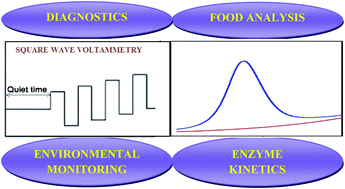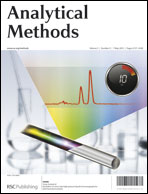Electrochemical sensing and biosensing based on square wave voltammetry
Abstract
Square wave voltammetry (SWV) has been widely used in the development of electrochemical sensors and biosensors in recent years due to its high selectivity and sensitivity. It is of great interest and importance to rapidly and sensitively detect disease-related biomarkers, environmental pollutants (e.g., heavy metals and other chemical contaminants), which are severely detrimental to human and animal life and the environment as a whole. Further, efficacious sensing is required for the detection of food resident contaminants (e.g., bacteria, viruses and parasites) and for the verification of the therapeutic ingredients of dietary supplements. Enzyme kinetics is another interesting domain that employs SWV as an effective analytical tool for the mechanistic study of enzyme reactions. The aim of this paper is to provide a comprehensive review of the electrochemical SWV method and its significant applications in sensing and biosensing spanning various fields such as diagnosis, environmental and food analysis and enzyme kinetics. The development of novel and improved electrode surfaces and nanomaterials introduces the possibility of sensors and biosensors that will exhibit even higher sensitivity, with SWV serving as an ideal methodology for its optimization. Concurrent with a better understanding of electrochemistry and life sciences, sensors and biosensors based on SWV have the potential to serve as next generation point-of-care diagnostic devices, as well as highly sensitive and selective detectors for food/environmental monitoring and enzyme studies.


 Please wait while we load your content...
Please wait while we load your content...